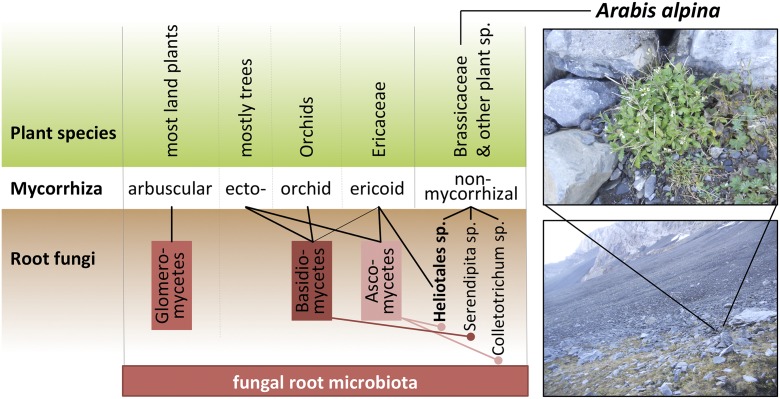Fig. 1.
Associations between plants and the fungal root microbiota. Different types of mycorrhizal associations include Glomeromycete fungi forming arbuscular mycorrhiza with most vascular plants. Ascomycete and Basidiomycete members form ecto-mycorrhizal symbiosis (mostly with trees), orchid mycorrhiza with orchids, and ericoid mycorrhizas with plants of the Ericaceae family. Moreover, recent studies demonstrate that the Mucoromycotina, a basal fungal lineage close to the Glomeromycetes, forms symbiotic associations with a wide range of plants (not shown) (16, 17). Emerging studies indicate that various nonmycorrhizal plants have the ability to form a functional symbiosis with Ascomycetous and Basidiomycetous soil fungi. Arabis alpina (Top Right) is a nonmycorrhizal Brassicaceae that is native to harsh arctic–alpine environments (site: Lenk i.S., Switzerland) and typically exposed to water limitations, fluctuating temperatures, and extremely low nutrient availability (18). In recent years, Arabis became a model to study adaptation to extreme environments, flowering control, or perennialism, and therefore also for root microbiome research (19).

